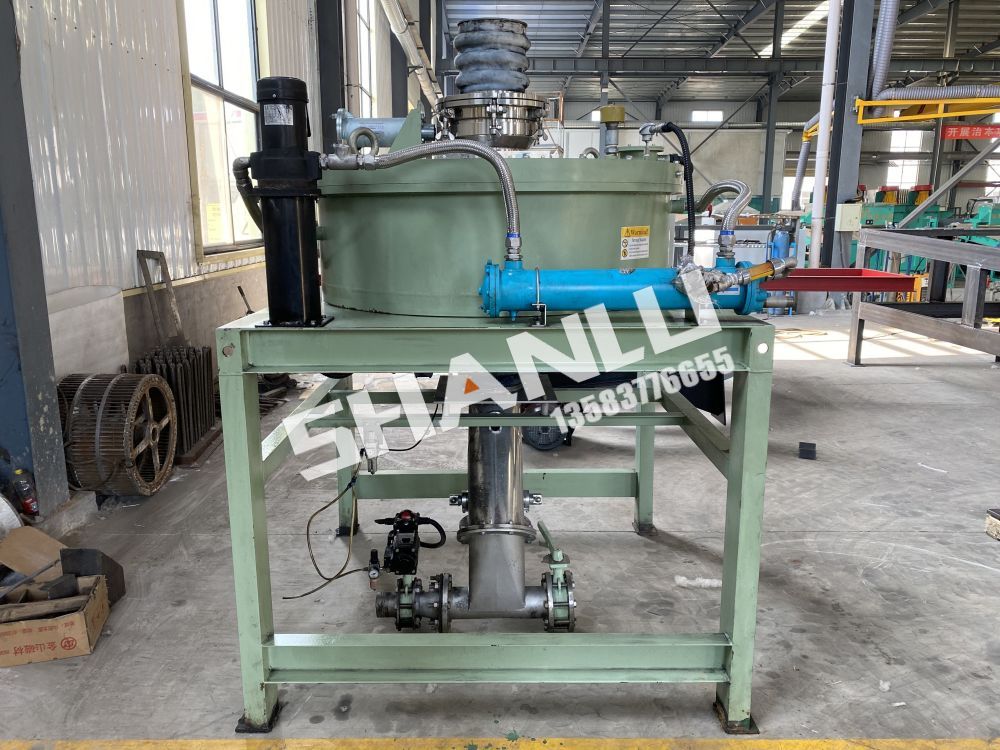There are significant differences between electromagnetic dry powder magnetic
separators and traditional magnetic separators in terms of principles,
structures, application areas, and performance. The following is a detailed
comparative analysis:

1. Working principle
-Electromagnetic dry powder magnetic separator:
-By relying on electromagnetic coils to generate a magnetic field, the
strength of the magnetic field is adjusted by controlling the strength of the
current. Equipment is typically used to process dry powdered or granular
materials.
-Electromagnetic fields can be adjusted according to demand, making them
highly adaptable and capable of handling different magnetic substances.
-Traditional magnetic separator:
-Mainly relying on permanent magnets to generate a constant magnetic field,
the magnetic field strength cannot be adjusted, and is usually used to process
materials in wet processes, such as magnetic substances in slurry.
-The magnetic field strength is relatively fixed and has relatively low
adaptability, making it suitable for separating fixed magnetic substances.
2. Application Fields
-Electromagnetic dry powder magnetic separator:
-Commonly used for high-precision sorting and drying of powdered or granular
materials, such as iron ore in ores and impurity separation in non-metallic
minerals.
-Suitable for application scenarios that require fine sorting and high
magnetic field strength, such as the sorting of high-purity quartz sand and
ceramic raw materials.
-Traditional magnetic separator:
-It is commonly used for processing materials containing water, such as iron
ore, coal, and heavy medium separation in mineral slurries.
-Suitable for coarse separation of magnetic substances in large-scale
production, such as mining beneficiation and coal washing.
3. Structure and Design
-Electromagnetic dry powder magnetic separator:
-Equipped with electromagnetic coils, capable of generating adjustable
electromagnetic fields. Its structure is usually more complex and requires a
cooling system to prevent equipment from overheating.
-In terms of design, emphasis is placed on sealing to prevent dust from
entering the electromagnetic system, and high-quality materials are used to
reduce wear and tear.
-Traditional magnetic separator:
-Mainly relying on permanent magnets, the structure is relatively simple and
does not require electromagnetic coils or complex electrical control
systems.
-Due to the processing of wet process materials, corrosion-resistant
materials are often equipped in the design to extend their service life.
4. Magnetic field strength and control
-Electromagnetic dry powder magnetic separator:
-The magnetic field strength can be flexibly adjusted as needed, suitable for
sorting different magnetic materials. The range of magnetic field strength is
relatively large, usually reaching 1.0T to 1.5T or even higher.
-By adjusting the current to control the magnetic field strength, the
operation is more flexible and adaptable.
-Traditional magnetic separator:
-The magnetic field strength is determined by the permanent magnet, usually
between 0.2T and 0.5T, and remains constant. Suitable for sorting materials with
significant magnetic differences.
-The magnetic field strength is not adjustable and cannot be flexibly
adjusted for the magnetic differences of different materials.
5. Maintenance and energy consumption
-Electromagnetic dry powder magnetic separator:
-Due to the installation of electromagnetic coils and complex electrical
control systems, maintenance is relatively complex, requiring regular
inspections of the electrical system and cooling devices.
-The energy consumption is relatively high, especially when operating under
high-intensity magnetic fields, resulting in significant electricity
consumption.
-Traditional magnetic separator:
-Due to its simple structure and absence of electrical components,
maintenance is relatively simple, mainly focusing on the condition of permanent
magnets and the wear of mechanical components.
-No need for electric drive, basically no energy consumption, only regular
maintenance of the mechanical parts is required.
6. Operation and usage environment
-Electromagnetic dry powder magnetic separator:
-The operation complexity is high and requires personnel who have undergone
professional training to operate, especially when adjusting the magnetic field
strength, it is necessary to master the electrical control system of the
equipment.
-Suitable for dry and dust-free environments, usually not suitable for use in
high humidity or humid environments.
-Traditional magnetic separator:
-The operation is relatively simple and suitable for large-scale industrial
applications. Operators only need basic training to get started.
-Suitable for wet operating environments and capable of working normally
underwater or under humid conditions.
summary
The electromagnetic dry powder magnetic separator, with its adjustable
magnetic field strength and high-precision sorting ability, is suitable for
application scenarios that require high magnetic fields and dry operations, and
has high adaptability and sorting accuracy. However, its structure is more
complex, consumes more energy, and is difficult to maintain.
Traditional magnetic separators are widely used in large-scale production of
coarse separation tasks such as ore and coal due to their simple structure and
suitability for wet processes. It is easy to operate and has low maintenance
costs, but its magnetic field strength is fixed and its adaptability is
relatively low.